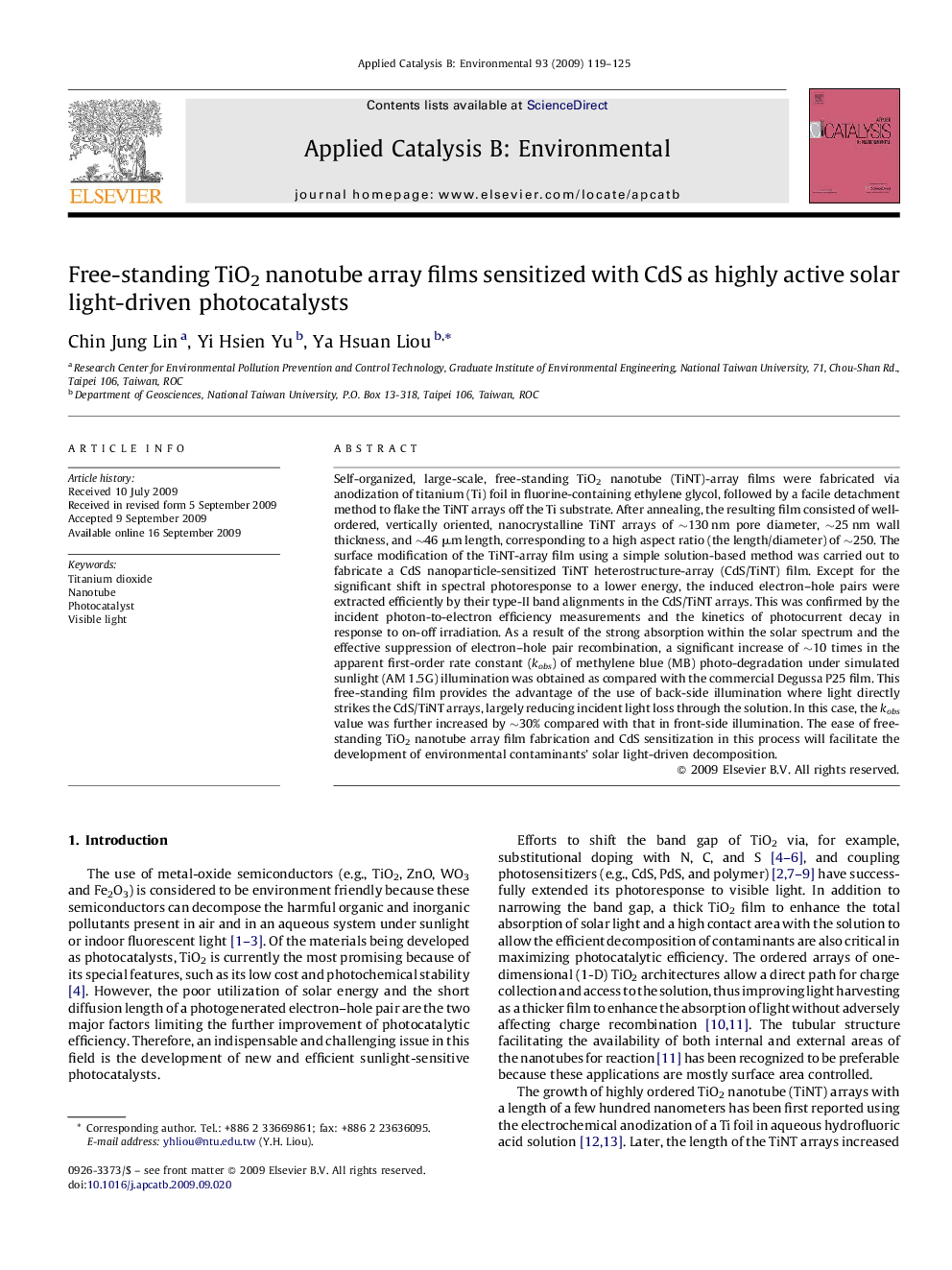| Article ID | Journal | Published Year | Pages | File Type |
|---|---|---|---|---|
| 47355 | Applied Catalysis B: Environmental | 2009 | 7 Pages |
Self-organized, large-scale, free-standing TiO2 nanotube (TiNT)-array films were fabricated via anodization of titanium (Ti) foil in fluorine-containing ethylene glycol, followed by a facile detachment method to flake the TiNT arrays off the Ti substrate. After annealing, the resulting film consisted of well-ordered, vertically oriented, nanocrystalline TiNT arrays of ∼130 nm pore diameter, ∼25 nm wall thickness, and ∼46 μm length, corresponding to a high aspect ratio (the length/diameter) of ∼250. The surface modification of the TiNT-array film using a simple solution-based method was carried out to fabricate a CdS nanoparticle-sensitized TiNT heterostructure-array (CdS/TiNT) film. Except for the significant shift in spectral photoresponse to a lower energy, the induced electron–hole pairs were extracted efficiently by their type-II band alignments in the CdS/TiNT arrays. This was confirmed by the incident photon-to-electron efficiency measurements and the kinetics of photocurrent decay in response to on-off irradiation. As a result of the strong absorption within the solar spectrum and the effective suppression of electron–hole pair recombination, a significant increase of ∼10 times in the apparent first-order rate constant (kobs) of methylene blue (MB) photo-degradation under simulated sunlight (AM 1.5G) illumination was obtained as compared with the commercial Degussa P25 film. This free-standing film provides the advantage of the use of back-side illumination where light directly strikes the CdS/TiNT arrays, largely reducing incident light loss through the solution. In this case, the kobs value was further increased by ∼30% compared with that in front-side illumination. The ease of free-standing TiO2 nanotube array film fabrication and CdS sensitization in this process will facilitate the development of environmental contaminants’ solar light-driven decomposition.
